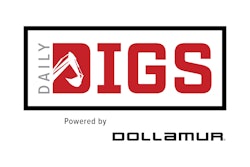Managing your facility's laundry operations requires more than a cursory knowledge of the latest in washer-extractor technology

In the political arena, spin control means steering public perception. In the laundry room, it means ensuring the efficiency of equipment that, in recent years, has become increasingly sophisticated. A number of technological advances in today's washer-extractors - from high-speed extraction to microprocessor programmability - have provided facility operators with more options than ever before.
The commercial laundry industry's most basic choice is between soft-mount and hard-mount washer-extractors. Each is qualified to handle even the most daunting laundry challenges. But deciding which machine is the best is a task easier said than done, says Randy Karn, East Coast district marketing manager for Maytag Commercial Laundry, a manufacturer of both types of washers. "First off, with softmount vs. hard-mount, we're not comparing apples to apples," he says. "It really comes down to where you're putting it. Ultimately, that will determine what will work best for you."
Soft-mount machines are ideal for use in spaces without substantial concrete foundations, which can include upperlevel rooms or those above basements. The washers - which have been popular in Europe for years - feature sophisticated, built-in suspension systems that absorb as much as 95 percent of the vibrations, thus requiring no bolts or anchors.
On the other hand, a hardmount washer-extractor is unable to endure the load energy it creates during extraction cycles, so that energy has to be transferred elsewhere. This is done by anchoring the machine to a 12- to 18-inchthick, reinforced concrete foundation (thus the "hardmount" moniker), which can absorb the vibrations without causing damage to the machine or laundry room walls.
Bolting into concrete a washer-extractor that, depending on its capacity, weighs anywhere from 900 pounds to more than a ton can be an expensive and troublesome task. Still, if there is one universal truth of the North American commercial laundry industry, it's this: hard-mount washer-extractors have reigned supreme. Able to launder anywhere from 18 to 140 pounds in linens per load, these machines - also known as rigid-mounts - have for years been used in athletic, fitness and recreation facilities all over the United States and Canada.
Industry observers credit this continent's widespread use of hard-mounts to several factors, including the difference in cost between those machines and their soft-mount cousins. Because of its complex suspension system, a soft-mount washer-extractor can feature as many as 300 more components than a hard-mount and, on average, cost 30 percent more.
It's true that the soft-mount's suspension system is responsible for the higher cost, but that system enables the machine to spin as fast as 1,000 rpm and at forces exceeding 300 Gs. "With a soft-mount, towels come out in 12 to 15 minutes, washed, rinsed and extracted," says Ira Feinberg, national sales director for USATowl/Panaram International, a Belleville, N.J.-based laundry services company.
The high extraction speeds of soft-mounts have been their greatest selling point. According to Mike Floyd, executive vice president of Oshkosh, Wis.based manufacturer Continental Girbau Inc., soft-mount machines remove so much moisture from the fabric upon completion of the wash cycle that drying time is reduced to a bare minimum. "Because the linen comes out drier, it can be directly transferred to a flatwork iron," he says.
These time- and labor-saving characteristics are sure to please just about any facility operator, soft-mount proponents argue, and might even prompt some to forego purchasing a dryer altogether. But several industry experts caution facility operators from skipping a dryer purchase simply because of a washer's high extraction speeds. One reason they give is that not all linens can bypass the drying process. For example, 100 percent polyester - a no-iron fabric - will emerge from a high-speed washer-extractor with wrinkles. Terrycloth, on the other hand, is not affected in such a way by the high G-forces.
Up until recently, the argument was that only soft-mount washer-extractors were capable of reaching high speeds. On average, hard-mounts spin at speeds of 400 to 500 rpm and exert from 70 to 90 Gs. But in recent years, with the introduction of high-speed hard-mount machines to the U.S. marketplace - some of them capable of spinning as fast as 750 rpm and at forces of 250 Gs - the differences between these machines and soft-mount washer-extractors are becoming less discernible.
Which is fitting, given that both soft and hard-mount washer-extractors require a great deal of care if they are to live out their full life expectancy of 15 years, says Kevin Hietpas, national sales manager for Huebsch, a brand of Ripon, Wis.-based Alliance Laundry Systems. How long a machine will last is directly related to its usage, but what may be surprising to some is that more damage can come from under-use than overuse. "One thing that is not good for these machines is under-loading," says Hietpas. "When you introduce additional vibration, you cut into the life of the machine and accelerate the need for more significant repairs. It's probably one of the most important things a laundry staff needs to know."
And that's just the beginning. There are a number of factors a facility operator needs to consider when making a laundry room purchase. Ultimately, the key is finding a balance between up-front cost, cylinder capacity and total process time, as well as long-term costs associated with maintenance and repair. This total-cost-of-ownership concept is something that Kim Shady, national sales manager for Unimac, also a brand of Alliance Laundry Systems, tries to impress upon potential customers. "Most people only ask, 'How much does it cost?' " he says. "But I tell those individuals who are investing in a laundry operation not to look at the price. I tell them to look at how much it's going to cost for them to own that piece of equipment over the next 10 years."
In 10 years' time, a facility could potentially operate for 3,650 days, or 87,600 hours. That's a lot of time that could easily be wasted in the laundry room - which in some facilities, operates around the clock - if proper attention isn't given to the laundry's per-load process time. For example, if a facility operator chooses a washer that finishes a load of linens in 15 minutes, he or she won't want to purchase a companion dryer that takes 30 minutes to process a load. Such a match will result in laundry room bottlenecking, something that using a washer and dryer with similar capacities will help avoid. (See "Heat Control," this page.)
Those facility operators who have done their homework will notice the broad range of cylinder capacities for both hard- and softmount washer-extractors. And a closer look at the specification sheets of machines from different manufacturers, despite being labeled with the same capacity, may reveal otherwise. "You may see two manufacturers who both call their machines 80-pound machines, but their capacities are off by as much as half a cubic foot," says Karn, who adds that the slight discrepancy shouldn't serve as a red flag to potential buyers. "Half a cubic foot is maybe one or two towels - it isn't that much. Most of the time, most manufacturers are pretty close."
Facility operators should be more concerned with their machine's lifetime cost of repair. The faster a machine spins, the more wear it will experience - and thus, the more often it will require replacement parts over its lifetime. In high-volume applications, a soft-mount machine will require replacement of parts related to its suspension system every one to two years. "It's just like if you drove your car at 100 miles an hour all the time," says Pat Sullivan, vice president of operations of The Dexter Co. in Fairfield, Iowa. "Just by the nature of the beast, the washer has a tendency to wear quicker than a machine that doesn't have quite as high extraction speeds."
Still, soft-mounts are freestanding and, unlike hard-mounts, don't incur any costs associated with concrete anchoring. "Trying to fit new hard-mount machines into an old laundry facility often presents problems," says Floyd. Even if the machine has been in place since a facility's opening, its anchor bolts will need to be adjusted or tightened from time to time. "Early on, they need tightening probably once every three to six months," says Karn. "After they've been down for a year or so, then probably you want to check them once a year. They may not need it, but you should always check them."
Again, the facility operator is presented with a tradeoff. Says Sullivan, "An experienced operator will try to find a happy medium between having a machine with a reasonably good extraction speed - so that it spins a good amount of water out of linens - and having one where the speed is not so great that it creates damage to the product."
If and when a washer does need repair, a facility operator will find the support - technical or otherwise - of their washer's manufacturer to be invaluable. "People need to be comfortable with the distributor that they're working with," says Hietpas. "A lot of times they'll say, 'This is the particular product that I think I need the most,' based on something they've read. They often don't realize that this machine is something they're going to want to get parts for, get service for and have available someone who can give them long-term guidance about either that machine or their overall laundry operation."
One way in which facility operators can reduce their long-term maintenance costs is by learning how to repair their own laundry machines. For those who are interested in learning about washer-extractor repair, a number of manufacturers offer educational seminars designed specifically to train facility operators and maintenance personnel. Kenner, La.-based manufacturer Pellerin Milnor Corp., for example, held two such seminars this summer, one in Colorado and the other in Pennsylvania. Each school featured four days of instruction, covering such topics as electrical troubleshooting, preventive maintenance, mechanical assemblies, schematic drawings and microprocessor control systems.
It is becoming more commonplace for both soft- and hardmount washer-extractors to be equipped with microprocessors, which are designed to allow for a machine's full automation and eliminate the need for constant monitoring by laundry attendants. Many microprocessors feature multi-language programmability, enabling users to input wash instructions in English, which can then be translated into and displayed in as many as seven languages, including Spanish. The technology has gradually made its way into the industry over the past decade, says Patti Andresen-Shew of Alliance Laundry Systems. "When they first came out, they were pretty complicated. But more and more, you're getting programs that don't require the user to key in a variety of different commands."
"They press one button and the machine knows that the towels or uniforms have to be washed a special way," adds Feinberg. "Automatically, detergents, disinfectants or degreasers go into that wash."
And because they can accurately regulate a wash's water temperature, microprocessors can save facilities on utility bills, which tend to make up around 10 percent of the cost of operating a laundry room. Temperature control is also important in the handling of wash chemicals, which can damage linens if not diffused entirely. Bleach, for example, is most effective in water temperatures of 140 to 150 degrees Fahrenheit. For machines without microprocessors, a standard warm-water cycle may heat anywhere from 90 to 110 degrees. "The bleach won't dissipate in the amount of time allowed in the cycle," says Shady. "Therefore, you'll still have bleach in the towels and when they go in the dryer, those warm air temperatures activate what bleach is left in the towels, creating pinholes."
Often an overlooked line item, linens can become one of the laundry room's costliest elements if not handled properly. Some industry experts estimate that extractors that spin at exceptionally high speeds over time can break down the fabric of some linens, reducing their life span by 50 percent. "There are a lot of garments or materials that you really wouldn't need or want to be spinning at such high G-forces," says Hietpas. "Depending on the material, 300 Gs may be beyond what's good for the material. Whatever you're saving in drying time and drying expense, you're wasting on linen replacement." But then again, he adds, "towels are built to take about as much as you can throw at them." Facility operators will want to choose a machine that agitates well enough to properly dissipate cleansing agents, preserving linens for as long as possible.
That shouldn't be hard to do, given the capabilities of the commercial laundry industry's latest offering of soft- and hardmount washer-extractors. It will take time and patience for a facility operator to learn the ins and outs of each type of machine before he or she can decide which washer-extractor will best fit his or her facility's needs. "With every benefit, you also want to look at the flip side of the coin," says Sullivan. "In my mind - and you have to take all the factors and lump them together - if you're able to process, wash and dry your laundry in less than one hour, that's reasonable."



































